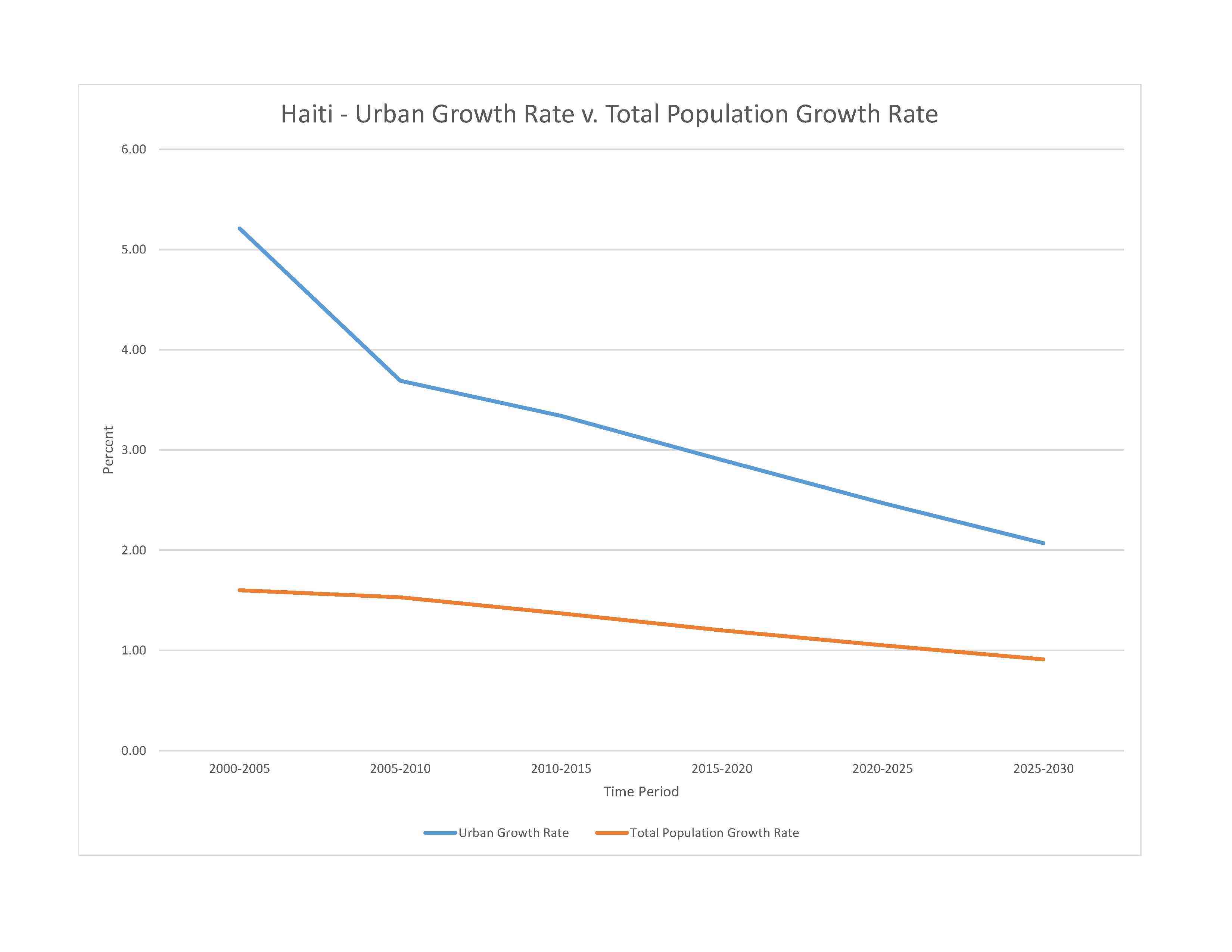
11,470,261 (2023 est.)
noun: Haitian(s)
adjective: Haitian
Black 95%, mixed and White 5%
French (official), Creole (official)
major-language sample(s): The World Factbook, une source indispensable d'informations de base. (French)
The World Factbook, sous endispansab pou enfomasyon debaz. (Haitian Creole)
The World Factbook, the indispensable source for basic information.
French audio sample:
Catholic 55%, Protestant 29%, Vodou 2.1%, other 4.6%, none 10% (2018 est.)
note: 50-80% of Haitians incorporate some elements of Vodou culture or practice in addition to another religion, most often Roman Catholicism; Vodou was recognized as an official religion in 2003
0-14 years: 29.68% (male 1,695,357/female 1,709,344)
15-64 years: 65.76% (male 3,733,899/female 3,808,453)
65 years and over: 4.56% (2023 est.) (male 228,800/female 294,408)
total dependency ratio: 58.3
youth dependency ratio: 51.2
elderly dependency ratio: 7.1
potential support ratio: 14.1 (2021 est.)
total: 24.7 years (2023 est.)
male: 24.4 years
female: 24.9 years
1.23% (2023 est.)
21.5 births/1,000 population (2023 est.)
7.7 deaths/1,000 population (2023 est.)
-1.6 migrant(s)/1,000 population (2023 est.)
fairly even distribution; largest concentrations located near coastal areas
urban population: 59.7% of total population (2023)
rate of urbanization: 2.47% annual rate of change (2020-25 est.)

2.987 million PORT-AU-PRINCE (capital) (2023)
at birth: 1.01 male(s)/female
0-14 years: 0.99 male(s)/female
15-64 years: 0.98 male(s)/female
65 years and over: 0.78 male(s)/female
total population: 0.97 male(s)/female (2023 est.)
22.4 years (2016/7 est.)
note: data represents median age at first birth among women 25-49
350 deaths/100,000 live births (2020 est.)
total: 38.8 deaths/1,000 live births (2023 est.)
male: 42.4 deaths/1,000 live births
female: 35.1 deaths/1,000 live births
total population: 64.8 years (2023 est.)
male: 63 years
female: 66.7 years
2.49 children born/woman (2023 est.)
1.24 (2023 est.)
34.3% (2016/17)
improved: urban: 91.9% of population
rural: 56.1% of population
total: 76.5% of population
unimproved: urban: 8.1% of population
rural: 43.9% of population
total: 23.5% of population (2020 est.)
3.3% of GDP (2020)
0.23 physicians/1,000 population (2018)
0.7 beds/1,000 population (2013)
improved: urban: 82.9% of population
rural: 42.6% of population
total: 65.6% of population
unimproved: urban: 17.1% of population
rural: 57.4% of population
total: 34.4% of population (2020 est.)
degree of risk: very high (2023)
food or waterborne diseases: bacterial and protozoal diarrhea, hepatitis A, and typhoid fever
vectorborne diseases: dengue fever and malaria
22.7% (2016)
total: 2.85 liters of pure alcohol (2019 est.)
beer: 0.55 liters of pure alcohol (2019 est.)
wine: 0.03 liters of pure alcohol (2019 est.)
spirits: 2.26 liters of pure alcohol (2019 est.)
other alcohols: 0 liters of pure alcohol (2019 est.)
total: 7.7% (2020 est.)
male: 12.2% (2020 est.)
female: 3.1% (2020 est.)
9.5% (2016/17)
51.4% (2023 est.)
women married by age 15: 2.1%
women married by age 18: 14.9%
men married by age 18: 1.6% (2017 est.)
1.4% of GDP (2020 est.)
definition: age 15 and over can read and write
total population: 61.7%
male: 65.3%
female: 58.3% (2016)
NOTE: The information regarding Haiti on this page is re-published from the 2024 World Fact Book of the United States Central Intelligence Agency and other sources. No claims are made regarding the accuracy of Haiti 2024 information contained here. All suggestions for corrections of any errors about Haiti 2024 should be addressed to the CIA or the source cited on each page.
This page was last modified 04 May 24, Copyright © 2024 ITA all rights reserved.